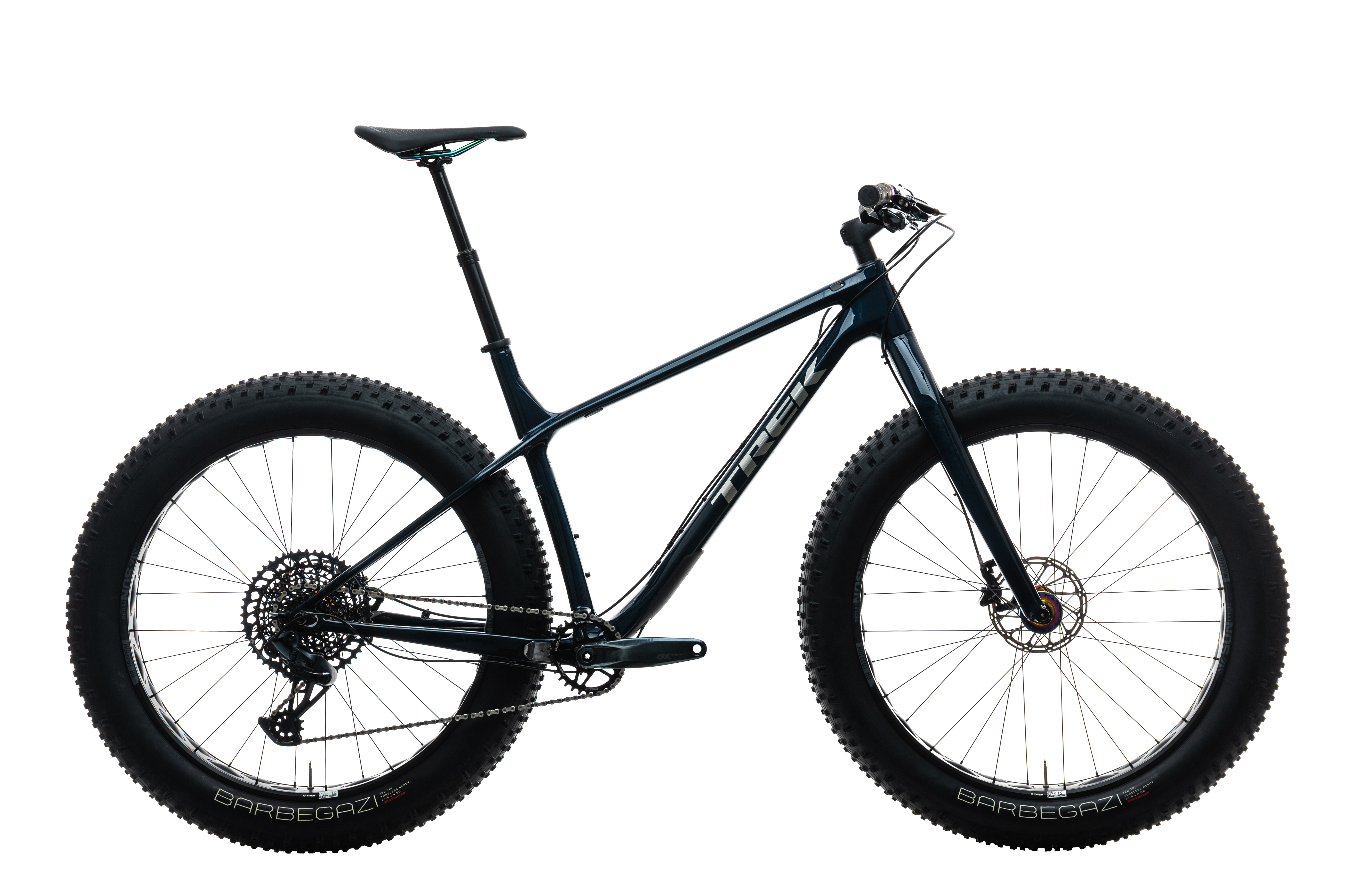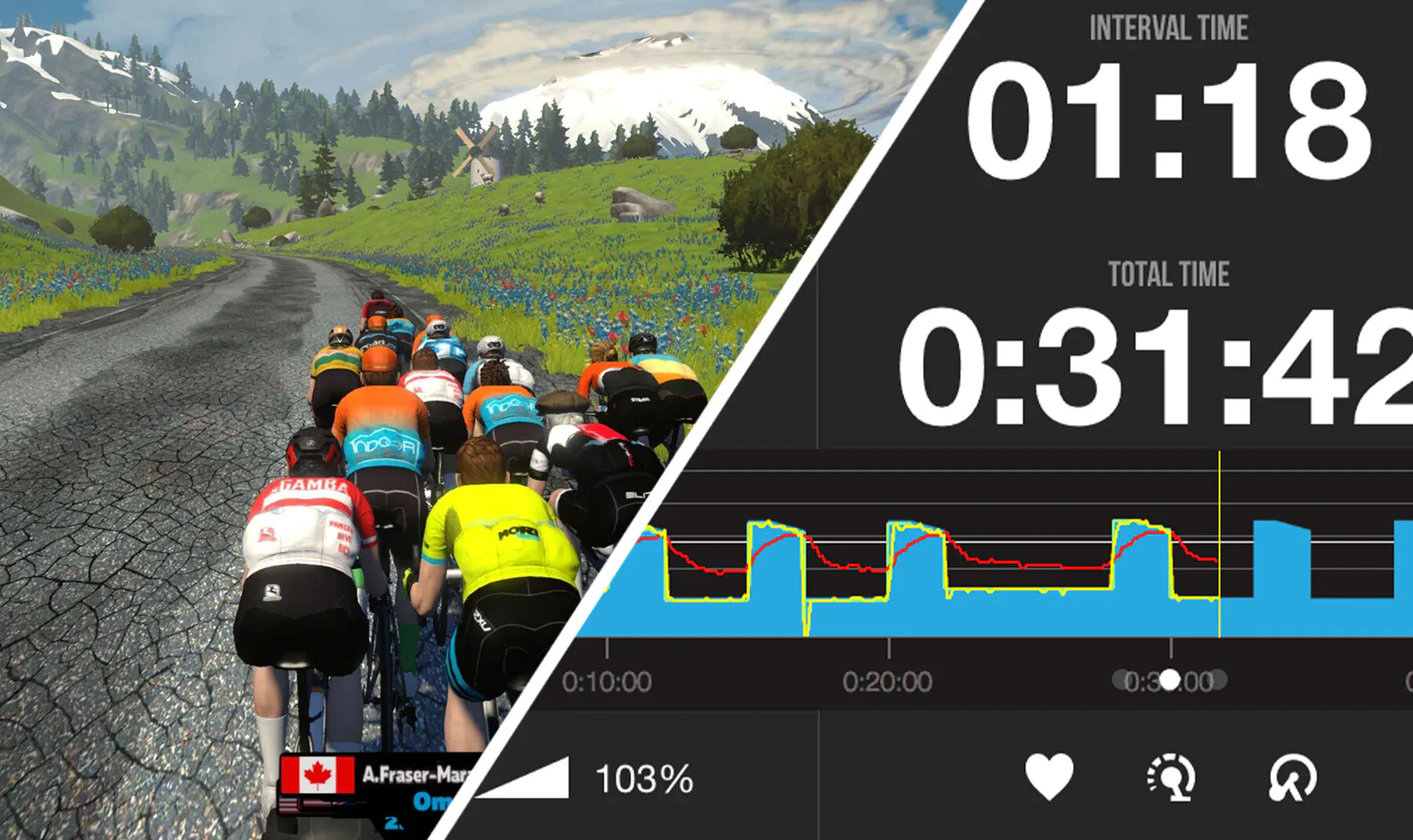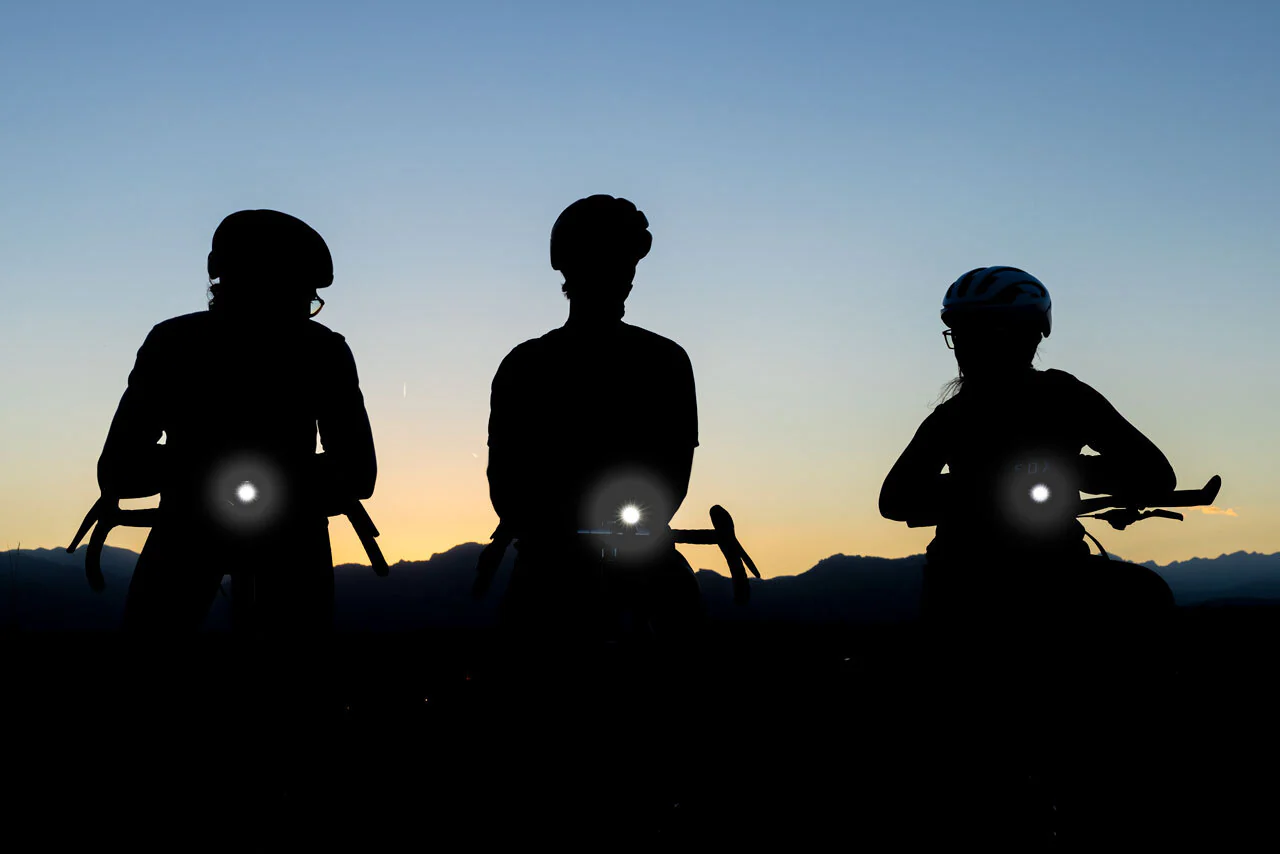Illustrations by Ping Zhu
Feeling depressed because your'e stuck on the trainer all winter? It’s time you got on a fat bike. Once you’ve ridden a fat bike, especially on snowy, groomed trails designed specifically for fat bike riding, you’ll never be bummed on winter again.
A brief history of big tires
Bikes with overly wide tires have been around for a long time, but their more modern history is understandably linked to Alaska, where snow and ice cover everything for a decent amount of the year. In fact, most people in Alaska will tell you that a fat bike is the best and easiest way to get around, especially in the winter. Fat tires can be run at a very low pressure, and thus can usually maneuver across snow and ice better than most vehicles. Even before the tire technology existed, resourceful riders found ways to increase their tires' contact patch, like this wild double-rim Clark-Kent made for the Iditabike race.
Alaskan bike builder Mark Gronewald originally coined the term “Fat Bike” in 2001. And for several years fat bikes were seen as strange and niche. But Surly saw the potential for mainstream use, and in 2005, the company released their first fat bike frame, the Pugsley.
Fat bikes also became popular in Mexico, for beaches and sandy trail riding. And now, fat bikes can be found all over the world. As long as speed isn’t a concern, fat bikes might be the vehicle that can go the most places, over the most surfaces imaginable.
[button]Shop fat bikes[/button]
Winter play time
Although fat tire bikes work all year round, for most, fat bikes mean playing in the snow. So what’s it like to ride a bike through the white stuff?
- Although many less technical mountain bike trails are great for fat biking, those trails will be very different under a coat of snow. Overall, your pace will be slower. You’ll want to be careful with corners to get used to how the snow feels in terms of traction.
- While the pace is more of a meander, it’s definitely a workout. Your tires should have very low pressure, leading to more rolling resistance and more effort, especially on climbs.
- No matter how low your tire pressure, going through deep, unpacked snow won’t be much fun. It’s much better to seek out packed snow. Groomed trails or trails that have been packed by foot, ski, snowmobile, or bike traffic are best.
How to dress for winter bike riding

What do you need to wear in order to enjoy riding through the winter? It’s all about layers.
You want warmth, but also flexibility. If you're familiar with cross-country or backcountry skiing, the apparel is similar. You’ll work up a sweat, so you want wicking layers, but you also need to keep your hands and feet warm. Layers will vary depending on how cold it is, what elevation you’re at, and if there’s full sun or clouds. It’s also a good idea to wear a backpack or bar bag to stash layers if you get warm.
- Baselayer: Make sure this is non-cotton and wicking. You don’t want to soak the layer closest to your skin because that will result in chills.
- Midlayer: A puffy vest or something that will keep your core warm.
- Outer layer: Something that will block the wind.
- Gloves and handlebar mitts: Try different combinations until you find the best fit for your conditions. Bar mitts are excellent for blocking wind and keeping hands warm. Sometimes, if you’re working hard enough, you don’t need anything except the mitts! But in very cold conditions, a combination of gloves plus mitts are sure to keep your fingers working.
- Footwear: Feet tend to get cold fastest, especially if you have to hike-a-bike through sections of deep snow. Fat bike shoes exist, but for more recreational riders, hiking boots work great. You’ll probably want to layer your wool socks for maximum warmth. In very cold conditions you might even use a layer of neoprene socks, or plastic bags between sock layers. Anything to keep the cold air out and your feet dry.
Other fat bike gear

- Even though fat biking can feel like slowly pedaling through marshmallow fluff, you still want to wear a helmet. The same helmet you wear for road or mountain biking is fine, unless you’re in extreme winter conditions, then a ski helmet might offer more warmth and protection.
- On a sunny day, surrounded by snow, you definitely don’t want to forget eye protection. If you’re in extremely snowy conditions, ski goggles might be the best bet.
- Even in the cold, it’s important to stay hydrated. Be sure to get an insulated straw so that it doesn’t freeze when you’re not using it. Osprey makes a fully insulated system, and CamelBak has an insulated tube that can be added to any of their bladders.
[newsletter]
Not all snow is the same
- Groomers: The absolute best conditions for fat bikes are groomed trails, especially for beginners. Like skiing, groomed trails are consistent and easy to maneuver. This kind of fat biking is ideal, endless fun.
- Snowmobile routes: While it’s kind of a drag to run into huge groups of snowmobilers, they lay down some pretty nice tracks to ride on. These routes aren't as pristine as groomed trails, but they allow you to go to some unique places that you normally wouldn’t be able to access.
- Snow covered roads: Even riding low-traffic country roads that have snow on them can be fun. If cars are able to drive over it, it is likely not deep enough to be too tough on a fat bike.
- Powder: The only thing that gets really tough is deep powder. You’ll notice as soon as you’re off the packed stuff that things get pretty frustrating. Try to power through, or hike-a-bike, and get back to the packed down snow.
What’s the best PSI?
If you’re used to riding a road bike at upwards of 90 or 100psi, the ideal fat bike psi might seem laughable. While most fat bike tires can handle up to 25psi, the ideal pressure, depending on conditions, will be between 3 and 10psi.
- Groomed trails = 3-4psi (so that you don’t damage the grooming)
- Other packed trails = 3-6psi
- Fresh snow = 3psi (as low as possible for float and traction)
- Snow covered pavement = 6-8psi
Fat bike etiquette
Hopefully, wherever you ride, everyone is aware of their environment. Many fat bike trails are multi-use trails. So, you’ll likely encounter skiers, snowshoers, and snowmobilers. Do your best not to ruin ski tracks, and take care of the trails. If you’re on groomed trails, try to avoid walking on them with boots. Yield to others in a respectful way.
Popular fat bike brands & models
Trek Farley

The 27.5 x 4.5˝ tires give you an extra-wide patch of rubber on the ground for incredible traction and stability. Farley is available in Alpha Platinum Aluminum and OCLV Mountain Carbon frame options. It has an adjustable thru axle dropout so that you can adjust the chain stay length to suit your style. Run it long for extra stability or bring it in for tighter, nimbler handling.
Specialized Fatboy

The Fatboy has 27.5x3.8 tires, which help it float over the trail. Features:
- Premium, M5 alloy frame, which is light on the scales, yet holds up to any adventure.
- Lightweight carbon-fiber fork provides tons of compliance and absorbs chatter.
- The SRAM Eagle 1X drivetrain is simple, yet gives you plenty of gearing to tackle any climb.
Surly Ice Cream Truck

- Long top tube, short seat stays, and a 68-degree head tube angle make it tight and maneuverable on fast, technical terrain
- Modern trail bike standards like stealth dropper post routing, 44mm head tube, and thru-axles
- Clearance for a full 26” x 5” tire on 100mm rims
Surly also makes an extreme off-road expedition bike (Pugsley) with clearance for 26" x 4.8" tires, and a highly versatile fat tire trail bike (Wednesday) that’s equal parts trail and touring.
Salsa Mukluk

This bike is made for all around fun but can stand up to just about anything. It features:
- HED Big Deal carbon rims
- Vibration dampening
- SRAM Guide hydraulic brakes
- 45NRTH Dillinger 5 tires
- Many bolts allow for most fork attachments, a top tube bag, a rear rack etc.
- The Mukluk delivers power efficiently, thanks in part to short chainstays.
- A low bottom-bracket contributes to a stable yet lively ride quality.
- Internal cabling allows unfettered attachment of frame bags and accessories.
Suspension
For most, the tires themselves will be enough “suspension” to enjoy just about any snowy ride. Because the tire pressure is so low, there’s often a “bouncy” feel that might make you think you have suspension. But fat bikes with suspension forks and actual full-suspension fat bikes do exist. They tend to work best on more rowdy trails where there are lots of uneven obstacles. A full-suspension setup allows you to run higher pressure, and can help with maneuvering especially long rides. But, if you’re riding in exceptionally cold temperatures, a rigid fork might be the safest bet.
[product-block handle="2016-salsa-bucksaw-gx1-l"/]
Fat tire e-bikes
Just like all e-bikes, fat tire e-bikes offer a boost of assistance so that a wider variety of users can enjoy the outdoors. Fat tire e-bikes, such as Quiet Kats, are designed for all kinds of conditions and activities. Many are also used as transportation to otherwise unreachable destinations to camp, fish, and continue other adventures.
Conclusion
Before you invest in a new fat bike, you can try renting to see if it’s your thing. But, it probably is. Put simply, fat bikes are pure fun, like being a kid again. And there’s no end to how serious (or not) you take it. Some people climb epic mountain passes that are closed to cars and covered in snow. Others enter events and races at trails and ski resorts across the country. But it’s also pretty great to just go out and meander through a winter wonderland. No matter what your level, you’re guaranteed to be smiling pretty much the entire time you’re on a fat bike. So stop dreading winter and check one out today.
[button]Shop fat bikes[/button]
We meticulously (and independently) pick every product, and if you purchase through our links we may earn a commission.

























